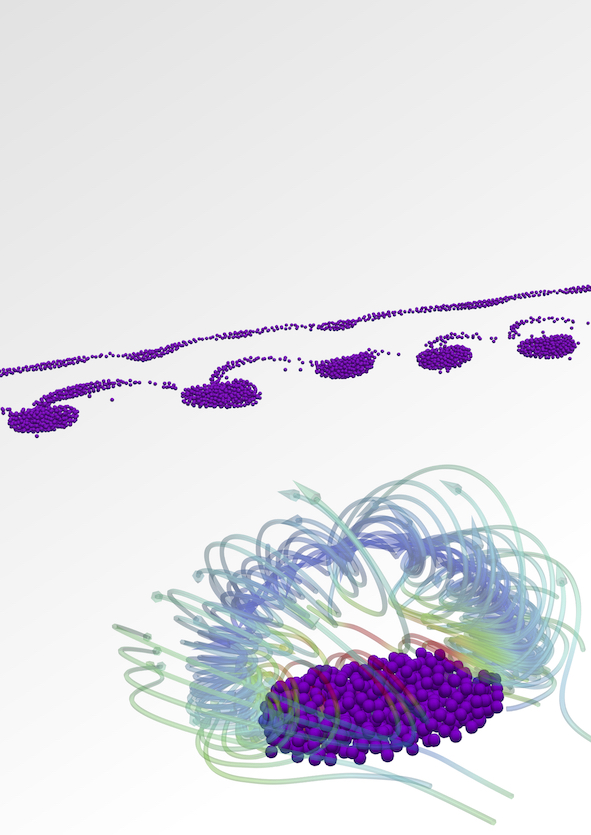Flagellar Synchronization and Eukaryotic Random Walks
Raymond E. Goldstein
DAMTP, Cambridge
Flagella, among the most highly conserved structures in eukaryotes, are responsible for such tasks as fluid transport, motility and phototaxis, establishment of embryonic left-right asymmetry, and are thought to have played a key role in the development of multicellularity. These tasks are usually performed by the coordinated action of groups of flagella (from pairs to thousands), which display various types of spatio-temporal organization. The origin and quantitative characterization of flagellar synchronization has remained an important open problem, involving interplay between intracellular biochemistry and interflagellar mechanical/hydrodynamic coupling. Using micromanipulation, high-speed imaging, three-dimensional cell tracking, and macroscopic studies of the model organism Chlamydomonas reinhardtii we have discovered the eukaryotic equivalent of the "run-and-tumble" locomotion known from bacterial chemotaxis. This is achieved by individual cells alternating between a noisy synchronized state and one with two very different beat frequencies. These results raise a whole range of new questions in the dynamics of eukaryotic flagellar beating and biological search strategies.
IMAGES

Genèse hydrodynamique des créatures colloïdales (plus de détails...)
CONFÉRENCES
2nd European Fluid Dynamics Conference, Dublin, Ireland, 26 Août 2025